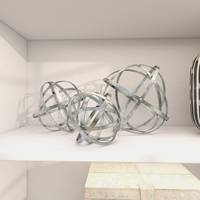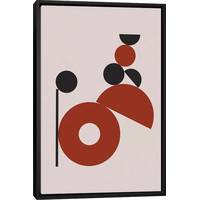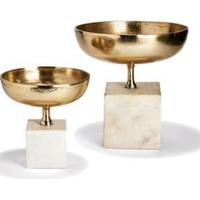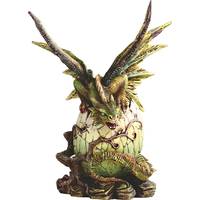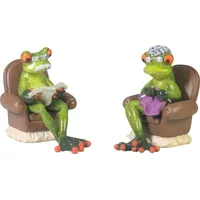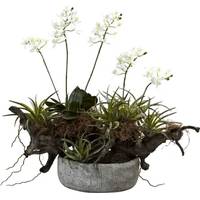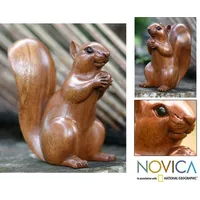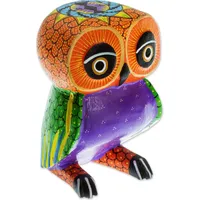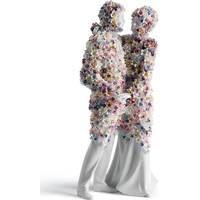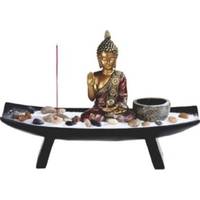Novica Handmade Flirty Hen Wood Alebrije Sculpture
Description
This brightly colored hen is the work of Mexican artisans Jesus and Roxana Hernandez, who preserve the distinctly Oaxacan folk art form of alebrijes. The figurine is carved by hand from copal wood before being carefully painted with a dizzying array of colorful motifs.The folk art tradition of alebrijes dates back to the 1930's in Mexico City. A man named Pedro Linares was taken ill, and in his fevered dreams he saw a strange land populated with curious creatures--a donkey with wings, a rooster with bull's horns, and a lion with the head of a dog. The beasts all ran at him, shouting the nonsense word,"alebrije! alebrije!"". Upon his recovery, Linares began recreating the fantastical creatures he had seen in his dream in papier mache. The art form gained popularity, and alebrijes are now made of wood as well as papier mache. Product Features: Dimension: 2.4"" H x 1.6"" W x 3.9"" D Weight: 0.132 Color: Multicolor Material: Copal wood Material - Copal wood Size - 2.4"" H x 1.6"" W x 3.9"" D / Weight - 0.132 Signed by the artist Made in Mexico Story Behind the art: Jesus and Roxana Hernandez come from a Zapotec community in Oaxaca. In our village, most of the men and women are wood-carvers and we specialize in Mexico's traditional alebrije sculptures. These are colorful and fanciful figures carved from natural branches that depict all kinds of strange and wonderful animals and imaginary creatures, Jesus explains. When we set up our workshop, the panorama didn't look good but we had so many dreams. We wanted to craft only large alebrijes with special motifs. These, of course, are worth more. But the problem wasn't making them. The problem was selling them. Not many shoppers purchased them and we became discouraged. So the first two years were rough for us. But then we were invited to participate in a public event that the governor attended. We gave a demonstration of carving and painting and he came over to see what we were doing. He recognized the value of our work and congratulated us. And he also bought the biggest alebrije we had — a bull. We were thrilled! It was a wonderful opportunity to introduce ourselves, because we were mentioned in newspapers and magazines that covered the event. From then on, we approached the public institutions that promoted popular art contests. We began to participate and won prizes, which gained recognition for our workshop. We have four children, who bring us much joy. We spend all our free time with them, whether flying a kite or taking a walk in the countryside. We want them to learn our art and to preserve and spread it. But more, we want them to grow up happy and proud. We are teaching them our craft and also teach our cousins, nieces and nephews. Mastering the art of alebrijes requires practice, discipline and much love. We use copal wood for our designs. We dry, treat and sand the wood before painting the motifs by hand. Roxana is expert at decorating the sculptures and her delicate hands convey beauty, from fine geometric patterns to flowers. The handmade touch of artisan skill creates variations in color, size and design. If buying two of the same item, slight differences should be expected. Note: Color discrepancies may occur between this product and your computer screen. Imported"
You may also like
loading
Discover more









































